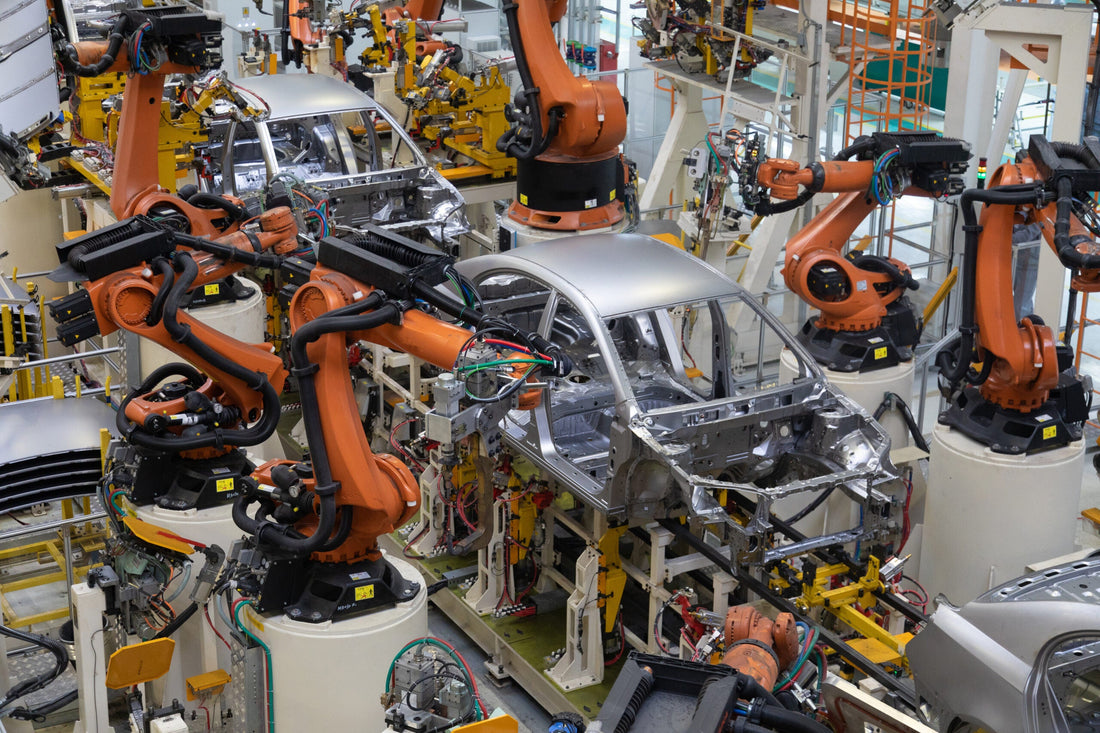
How Automotive Robotics is Revolutionizing the Auto Industry
Share

The automotive industry is undergoing a dramatic transformation, fueled by the integration of advanced robotics. Automotive robotics—computer-programmed engineering solutions—are revolutionizing how vehicles are designed, assembled, and delivered. With their unparalleled efficiency, precision, and reliability, these robots are reshaping the industry while enhancing productivity and worker safety.
For investors, the rise of automotive robotics represents a lucrative opportunity to capitalize on a rapidly evolving market. Here’s how robotics are driving innovation and reshaping the future of automotive manufacturing.
The Rise of Automotive Robotics: Key Advantages
Automotive robotics enable manufacturers to perform monotonous and hazardous tasks with unmatched accuracy and efficiency. These robots are used across various stages of vehicle production, including:
1. Material Handling
Robots optimize material movement, protection, and storage throughout manufacturing and distribution. This automation reduces costs, boosts order accuracy, and enhances worker safety, making it an essential component of modern automotive production.
2. Welding
Robotic welding eliminates human error and ensures precise welds using advanced scanning technology. This not only improves quality but also speeds up production, reduces waste, and enhances safety.
3. Painting
Robots have transformed automotive painting by applying uniform coatings at high speeds. They can handle complex surfaces and hazardous chemicals with ease, ensuring a smooth finish while minimizing risks to human workers.
4. Assembly
Assembly robots streamline the production process, offering superior control, accuracy, and efficiency. They perform tasks such as part identification, sorting, and bin picking, ultimately improving product quality and reducing production times.
Exploring the Types of Automotive Robotics
The diverse applications of automotive robotics have led to the development of specialized robot types, each designed to address unique production challenges:
· SCARA Robots: Ideal for precise tasks like picking, placing, and engraving, SCARA robots offer flexibility and efficiency.
· Cartesian Robots: Known for their precision, these robots excel in linear motion tasks such as palletizing, welding, and assembling.
· Collaborative Robots (Cobots): Designed to work alongside humans, cobots enhance production efficiency while maintaining safety and ease of use.
· Parallel Robots: With high precision and dynamic performance, parallel robots are used in applications like packaging and pick-and-place operations.
· Articulated Robots: These robotic arms, with multiple joints, dominate the automotive robotics market, performing tasks like welding, assembly, and material handling with speed and versatility.
Market Dynamics: Regional Insights
Asia-Pacific: Leading the Charge
Asia-Pacific holds the largest share of the automotive robotics market, accounting for 42%. This dominance is driven by:
· High Vehicle Production: China, India, and Japan lead in automotive manufacturing. China alone is expected to produce 35 million vehicles annually by 2025.
· Growing EV Demand: Stricter emissions regulations and a shift toward zero-emission vehicles are boosting the adoption of robotics in EV production.
Europe: A Strong Contender
Europe holds a 34% market share, fueled by:
· Leading Manufacturers: Companies like Volkswagen, BMW, and Mercedes Benz are heavily investing in robotics to meet the growing demand for EVs.
· Stringent Emissions Targets: Regulations such as the EU's 2035 ban on internal combustion engine vehicles are driving automation in production.
Future of Automotive Robotics
The future of automotive robotics is intertwined with advancements in AI, machine learning, and computer vision. Emerging technologies promise to enhance the capabilities of robots, making them integral to the production of safer and smarter vehicles.
Notable trends include:
· Autonomous Driving: Robotics will play a pivotal role in manufacturing autonomous vehicles, addressing challenges like precision and safety.
· Sustainable Production: Robotics will drive innovations in zero-emission and recyclable vehicle manufacturing, aligning with global sustainability goals.
Competitive Landscape: Who’s Leading the Market?
The automotive robotics market is highly competitive, with key players such as:
· ABB Ltd.
· OMRON Corporation
· KUKA AG
· Yaskawa Electric Corporation
· FANUC Corporation
These companies are leveraging strategies like partnerships, acquisitions, and technological innovations to strengthen their market positions.
Investment Opportunities in Automotive Robotics
For investors, the automotive robotics market offers immense potential:
· EV Manufacturing: With the global shift toward electric vehicles, investments in robotics tailored for EV production are highly promising.
· AI and Machine Learning: Companies integrating these technologies into robotics are poised to drive the next wave of innovation.
· Sustainability Solutions: Robotics companies focusing on eco-friendly production and recycling technologies present long-term growth opportunities.
Conclusion
Automotive robotics are not just transforming manufacturing—they’re redefining the auto industry. As the demand for efficient, sustainable, and high-quality production grows, robotics will continue to play a central role.
For investors, now is the time to seize opportunities in this dynamic market. By aligning with key players and emerging technologies, you can drive growth while contributing to the future of automotive innovation. The road ahead for automotive robotics is not only transformative but also highly profitable.